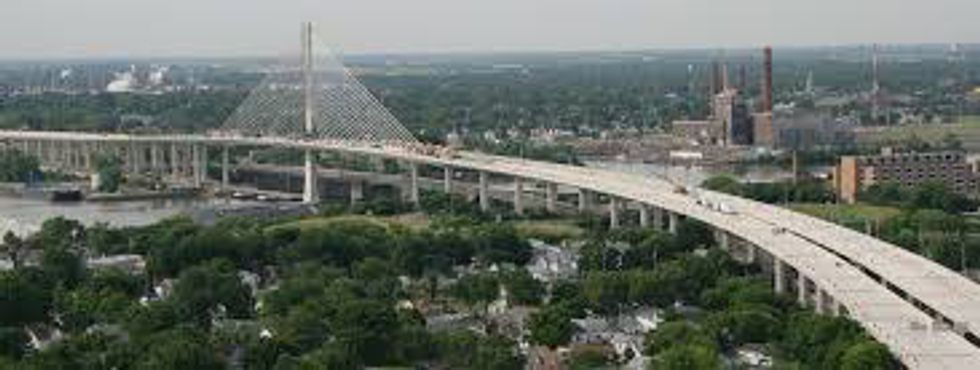The bridge’s full name is the Veteran’s Glass City Skyway.
The Veteran’s Glass City Skyway is in Toledo, Ohio, and it goes across the Maumee River. The Maumee River is a direct route into Lake Erie.
Planning of the bridge began in 1999 and Construction started in 2001. The Bridge was completed and opened June 24, 2007.
The Veteran’s Glass City Skyway is made out of steel rope, concrete, steel, and it has LED lighting. The LED lighting can be changed and is often seen from multiple places in Downtown Toledo.
The Veteran’s Glass City Skyway was the biggest construction project in the Ohio Department of Transportation’s history. It has a Glass theme because Toledo, Ohio is known as the Glass City. Additionally, its main pylon has 348 LED fixtures that can change colors. Finally, the Veteran’s Glass City Skyway is a cable-stayed bridge; cable-stayed bridges are descendants of Suspension bridges and they have one or multiple pylons that have cables to support the bridge.
The way the bridge works is that on the outer ends, it has multiple pylons to support the negative forces of gravity and the weight of cars. Then, when the bridge goes over the water, it has only one big pylon. This pylon uses cables to support the bridge and pull it up when weight goes over it. The cables are almost perpendicular to each other; this bridge is known as a harp class cable-stayed bridge. The pylon is built to hold the pull of the bridge from the forces of gravity. It is the primary load-bearing structure of the bridge. Because the cables pull to the sides and not upwards, the bridge deck must be stronger to resist the horizontal compression. Also, because of this, ground anchored cables are not required. The use of cables and pylons on this bridge keeps both the sum of the forces and the sum of the moments equal to zero—it results in equilibrium.

























